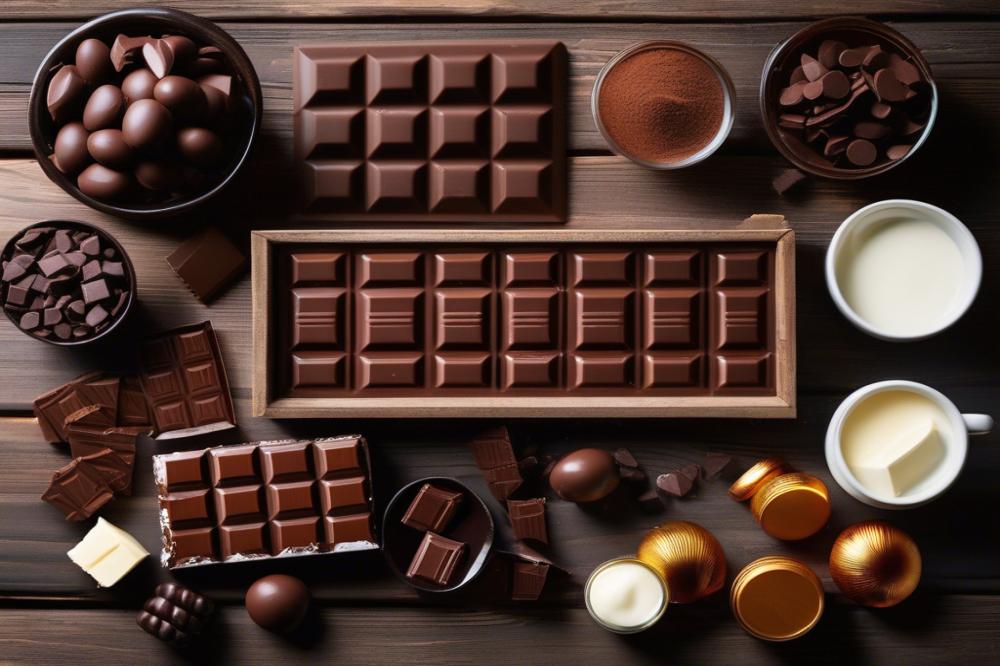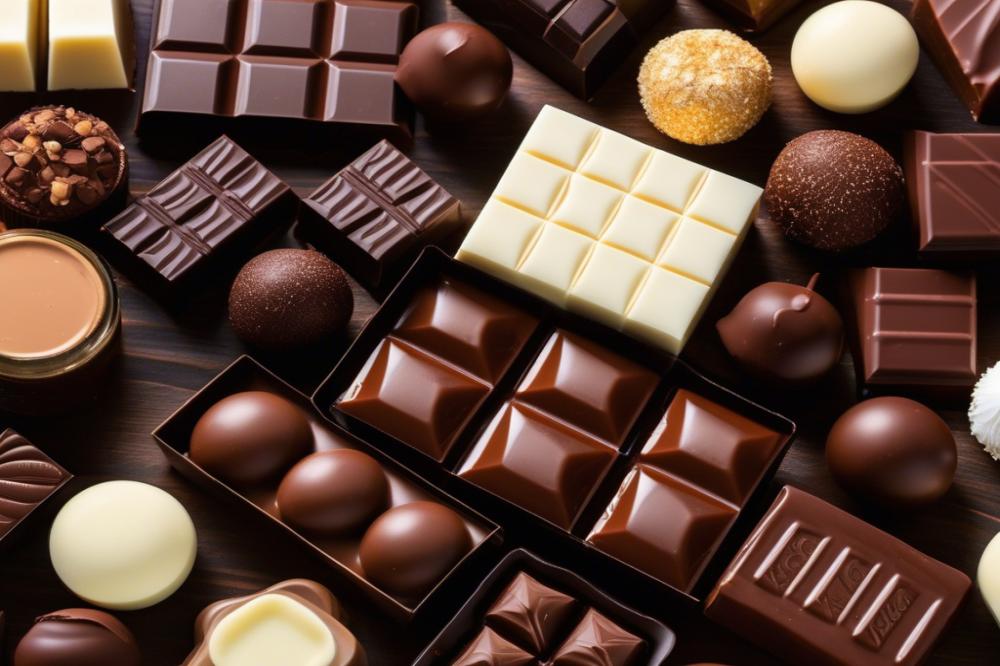The Science of chocolate storage: How to Keep Your Product Fresh and Flavorful
Chocolate is more than just a treat. It is a delicate balance of flavors and textures, shaped by the essential cocoa beans from which it is made. Proper storage plays a vital role in maintaining its quality and freshness. When you take care of your chocolate, you preserve not only its appearance but also its rich flavor and satisfying bite.
Understanding how to maintain chocolate freshness can greatly enhance your enjoyment of this beloved confection. When chocolate is stored correctly, the unique flavors remain intact. This is critical because chocolate quality can diminish if exposed to poor conditions. Flavor notes may become muted or even unpleasant if improperly handled.
Several factors come into play regarding chocolate preservation. Temperature is a significant consideration; chocolate should ideally be kept around 65 to 70 degrees Fahrenheit. This is essential to avoid melting or causing bloomed surfaces. Humidity control also matters greatly. Excess moisture can lead to sugar bloom, which affects texture and taste. Using airtight containers can protect your chocolate from unwanted air and humidity, which both contribute to declining quality. Additionally, the right packaging prevents external odors from seeping in, preserving the chocolate’s true essence.
By following recommended storage tips, you can prolong the shelf life of your chocolate. Keep it away from heat sources and sunlight. Choosing a dark, cool location is best for preserving that luxurious taste. Whether you prefer bars, truffles, or gourmet varieties, chocolate deserves the utmost care. After all, enjoying a piece of perfectly preserved chocolate is one of life’s simplest pleasures.
Understanding chocolate storage

Chocolate storage refers to how we keep chocolate products to maintain their freshness and flavor. It plays a significant role in preserving the quality of this beloved treat. When chocolate is not stored properly, it can lose its unique taste, texture, and overall appeal.
Different Types of Chocolate and Their Specific Storage Needs
Various types of chocolate exist, including dark, milk, and white chocolate. Each type has distinct characteristics, leading to different storage requirements. Dark chocolate, known for its high cocoa content, can often be stored at room temperature in a cool, dry place. Milk chocolate, with its added dairy, is more sensitive to heat and should also be kept in a cool environment. White chocolate, despite being sweet, is best stored away from direct light to prevent unwanted odors. Understanding these differences is crucial for chocolate preservation.
The Role of Cocoa Content in Storage
Cocoa content heavily influences how chocolate should be stored. High cocoa chocolates, like dark varieties, have a lower tendency to absorb odors from the surroundings. In contrast, chocolates with lower cocoa levels, such as milk and white, can be more susceptible to changes in flavor. Chocolate flavor is often compromised if it interacts with humidity or strong smells. Thus, maintaining humidity control is vital. Keeping chocolate in airtight containers can help prevent moisture and odors from affecting quality.
Maintaining the ideal temperature is also important for extending chocolate shelf life. A temperature between 60 to 70 degrees Fahrenheit is generally recommended. Storing chocolate in its original packaging can further protect it from light and temperature fluctuations. Following these storage tips will help anyone enjoy the rich delight of chocolate for longer periods.
Ideal Conditions for Chocolate Preservation

The Ideal Temperature Range for Chocolate Storage
Maintaining the right temperature is critical. The ideal temperature for storing chocolate is between 60°F and 70°F (15°C to 21°C). In this range, cocoa will retain its flavor and texture. Warmer temperatures can cause chocolate to melt or lose flavor. On the other hand, if it gets too cold, chocolate can develop a white haze known as bloom. This bloom does not affect taste but can alter its appearance.
Effects of Temperature Fluctuations on Chocolate Quality
Temperature fluctuations can be damaging. When chocolate undergoes changes in temperature, it may be at risk of compromising its quality. Rapid changes lead to fat bloom, which appears as a whitish coating. This issue affects the visual appeal and texture of chocolate. Consequently, the overall experience of enjoying chocolate diminishes. Keeping temperature steady helps to extend chocolate shelf life.
The Importance of Humidity Control in Preserving Chocolate Flavor
Humidity plays a significant role in chocolate preservation. High humidity can cause cocoa to absorb moisture, leading to undesirable changes in flavor. Too much moisture can also lead to the growth of mold. Conversely, very low humidity can dry out chocolate, impacting its taste. Using airtight containers is an effective way to control humidity levels. Proper chocolate packaging can help maintain an ideal environment for these delicate treats. Proper humidity control is essential for preserving chocolate flavor without compromising its quality.
Choosing Containers for Chocolate Storage
Selecting the right containers for chocolate is essential for maintaining its quality. Airtight containers offer significant benefits. They help protect the cocoa from air and moisture, preventing degradation of taste. Exposure to air can lead to unpleasant flavors developing over time. This often happens when chocolate is left out in the open for prolonged periods. Such conditions can drastically reduce chocolate shelf life.
Chocolate preservation relies heavily on keeping it away from unwanted elements. The ideal temperature for storing chocolate is usually cool and stable. If chocolate becomes too warm, it can melt and lose its delightful texture. On the other hand, high humidity can cause it to bloom, resulting in a white film on the surface. This bloom can impact chocolate flavor as well as texture. Therefore, humidity control is crucial for extending the life of your chocolate.
Recommendations for Proper Chocolate Packaging
When it comes to packaging, consider using proper materials. Glass jars or metal tins can work well when they are airtight. Be cautious with plastic, as some types may not provide a tight seal. Always keep chocolate away from strong odors, as it can absorb these scents. It’s advisable to wrap chocolate in foil or parchment paper before placing it in a container. This extra layer serves as additional protection against air and odors.
Finally, remember to label your containers with the date. This simple step helps you track how long you’ve had the product. Following these storage tips can significantly contribute to chocolate quality. Avoiding temperature fluctuations and humidity can keep your chocolate fresh and flavorful for a long time.
Top Storage Tips for Maintaining Chocolate Quality
Best Practices for Storing Chocolate at Home
Storing cocoa products the right way is crucial for preserving their qualities. An ideal temperature for chocolate is between 60°F and 70°F (15°C to 21°C). Avoid placing it near heat sources such as stoves or ovens. Keeping chocolate in a cool, dry place helps to maintain its rich flavor. Using airtight containers is a smart choice to guard against moisture. Exposure to air can lead to oxidation, which harms taste. If possible, keep chocolate in its original packaging until ready to use. This practice helps to protect its quality and prevent unwanted absorption of odors from other foods.
How to Transport Chocolate Without Compromising Quality
When it comes to moving chocolate, precautions are necessary. High temperatures can quickly ruin chocolate’s texture and flavor. If traveling, consider using insulated bags or cold packs to keep it cool. Bubble wrap can protect it from breaking during transit. Avoid leaving it in a hot vehicle for too long. After arriving at your destination, store the chocolate in a cool spot away from direct sunlight. Quick trips are less damaging than prolonged exposure to heat. Always check packaging after reaching your destination. Replacing it in an airtight container can further prolong chocolate’s shelf life.
Seasonal Considerations for Chocolate Storage
With changing seasons, different strategies may be needed. In warmer months, chocolate is more vulnerable to melting. It’s wise to store it in a refrigerator if the temperature exceeds normal ranges. However, studies show refrigeration can alter flavor profile. Allow it to come to room temperature before enjoying it again. During colder months, humidity control becomes a priority. Chocolate can absorb moisture from the air, leading to sugar bloom. Keeping it in a dry environment will help maintain its appearance and taste. Always remember to adjust your storage methods based on the season. Protecting chocolate is about knowing when and where to store it properly.
Common Mistakes to Avoid in Chocolate Storage
Misunderstandings about Chocolate Refrigeration
Many people believe that refrigerating chocolate is the best way to keep it fresh. This is not true for most types of chocolate, as cold temperatures can change its texture and flavor. The ideal temperature for chocolate is between 60°F and 70°F. Storing cocoa or chocolate in the fridge can lead to condensation. This moisture will ruin the chocolate’s glossy appearance and alter its taste.
Consequences of Improper Storage Methods
Improper storage methods can shorten chocolate shelf life considerably. Leaving chocolate exposed to air can also lead to oxidation, diminishing its quality. When wrapped loosely or placed in open containers, it may absorb odors from nearby foods. This can result in an unpleasant flavor. Furthermore, using containers that allow too much humidity may cause the chocolate to bloom, creating a white, powdery surface. This alteration does not make chocolate unsafe, but it does affect its texture and overall enjoyment.
Tips for Recognizing Spoilage in Chocolate
Recognizing spoilage can help maintain the best chocolate flavor. Start by looking at the surface. If it appears dull or has a grainy texture, that may indicate it has been improperly stored. Smell it too. Fresh chocolate will have a rich aroma, while spoiled chocolate may smell off or flat. Taste testing also matters. If it tastes stale or has lost its sweetness, it may have degraded over time. Storing chocolate in airtight containers can preserve its flavor while keeping it away from humidity. Remember to use original chocolate packaging until you’re ready to indulge. This practice keeps the chocolate pristine for a longer period.
Wrapping Up: Optimal Practices for chocolate freshness
In summary, effective storage can significantly optimize your chocolate experience. Protecting your sweet treat from light, heat, and moisture is essential. Choosing a cool, dry place is crucial. Using an airtight container will safeguard against unwanted odors and humidity.
Freshly stored chocolate not only retains its delightful texture but also its rich flavors. When you take the time to properly store your cocoa-based delights, each bite can be an enjoyable experience. Remember to keep chocolate away from strong smells, as it easily absorbs these odors. Quality matters, so select chocolate wisely to enjoy its full potential.
Embracing these practices can transform how you enjoy chocolate. It is rewarding to savor a piece that bursts with flavor and freshness. As you incorporate these storage tips into your routine, you’ll likely discover a new appreciation for your favorite indulgence. So, why not give it a try? Practice chocolate preservation and relish the true taste of your treats.



